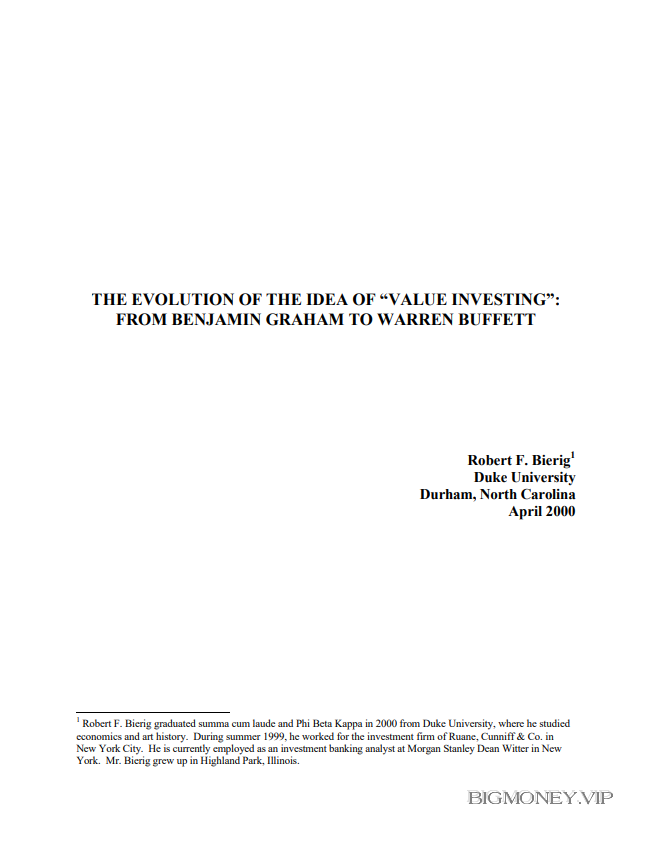THE EVOLUTION OF THE IDEA OF “VALUE INVESTING”: FROM BENJAMIN GRAHAM TO WARREN BUFFETT by Robert F. Bierig

1. Introduction
Before the stock market crash of 1929, portfolio investment was a disordered and
muddled activity. Benjamin Graham and David L. Dodd’s Security Analysis, first published in
1934, brought structure and logic to the field, creating an intellectual framework for sound
investment. In an area where much looks foolish shortly after publication, Graham’s principles
have proved reliable for over sixty-five years. Moreover, as Warren Buffett wrote in a
remembrance about Graham in the Financial Analysts Journal, their value has often been
“enhanced and better understood in the wake of financial storms that demolished flimsier
intellectual structures.”
Graham mostly operated in a business environment conditioned by the extreme
economic collapse of the 1930s. Indeed, the majority of investors remained shell-shocked for
many years thereafter. As a result, Graham and his disciples could readily find extraordinary
bargains in the public securities markets. However, in investing, like in life, one must adapt to the
conditions at hand.
Investors in the United States eventually gained insight from the recognition that stocks
had been chronically mispriced on the low side. Accordingly, investors bid stock prices higher
and higher, and, by and large, the most obvious bargains of the type Graham had always
searched for vanished. Thus, in order to remain successful, the Ben Graham disciples had to
change their definition of a bargain in various ways. Graham’s most famous pupil, Warren
Buffett of Omaha, Nebraska, is generally credited with refining and enlarging his mentor’s
principles. Both because of the enormous size of Buffett’s chief investment vehicle, Berkshire
Hathaway, and because he finds businesses more interesting than did Graham, Buffett tries to
find businesses whose cash flows he expects to grow substantially in the future.
This paper will trace the evolution of Graham’s and Buffett’s ideas in response to changes
in both economic conditions and their own experiences. We emphasize that this paper does not
argue for the merits of “value investing” or claim that “value investing” is the “correct” approach.
Nor does the paper present a biography of Benjamin Graham or Warren Buffett – although we
introduce some biographical material in order to contextualize the development of their thought.
After all, like all ideas and beliefs, the ideas and beliefs held by Graham, Buffett, and their fellow
“value investors” shaped and were shaped by personal and social experience.
We note that this paper does not simply reprise material that already appears in the widely
available books and articles on Buffett and Graham. Rather, it narrates an evolving
business/investment philosophy – and, therefore, it may be seen as a case study of specific kinds
of ideas as we ask how thought in the discipline of “value investing” has changed, why it has
changed, and how these changes have affected investment strategy and practice. In conducting




